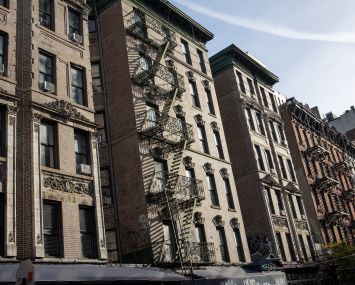If you are a frequent reader of Concrete Thoughts, you know that I have said that the relationship between politics, economics and real estate has never been more closely intertwined. Beginning in late 2007 with the impending credit crisis and the unprecedented level of government intervention, it became clear that policy makers would have a tangible impact on the dynamics within the commercial real estate markets.
Initially, the government’s efforts were focused on saving the financial markets. It then moved on to the housing market. Thinking that if Americans had more equity in their homes, consumer spending would rise, the government kept interest rates low to try to stimulate home values. A tangential beneficiary of this policy was our commercial real estate market.
We are at a point now where commercial property values have appreciated dramatically, deviating from their long-term, highly correlated relationship to underlying fundamentals. Opinions about where our market is headed are quite divergent.
Pessimists believe that we are in a bubble and that another downturn is right around the corner. Easy monetary policy for years, a tripling of the money supply and massive expansion of the Fed’s balance sheet with mediocre (at best) gains in both GDP and monthly job growth support the pessimists.
On the other side of the coin, optimists point to a low interest-rate policy that the government will have trouble abandoning (to the extent they are able to control it), given the catastrophic ramifications a substantial rise in interest rates would have on the federal balance sheet. Our federal debt is now over $6 trillion higher than it was six years ago, but our debt service payments are lower than they were then. An increase in rates would lead to massive deficits, something the government wants to avoid at all costs.
A low interest-rate policy, coupled with the optimists’ view that fundamentals are poised to expand rapidly, has those folks feeling like the market has at least five more years to run before the music stops (or at least slows down).
So where are we headed? If the second quarter of 2014 shows another contraction in GDP growth (as the first quarter did), the economy will technically be in recession again. Thus far, the New York City market appears unaffected by this national malaise. Will interest rates rise, and if so, how quickly and to what extent? What will happen to real estate tax policy in New York City under the current administration’s expansive agenda and lack of revenue to accomplish it?
While these issues are always watched by market participants, something else must appear on our radar screens: tax reform. On a federal level, it could have a more profound impact on our commercial real estate market than anything else.
Many of the senators and congressmen I speak to have indicated that “everything is on the table” when it comes to potential tax reform. As we approach the midterm elections in November, we must listen to the political rhetoric coming from the candidates. Leading up to the 2010 midterms, talk of raising the capital gains tax rate led to a spike in selling commercial assets, creating an extraordinarily robust sales market in 4Q10. That increase never came to pass and was an issue again just two years later, contributing to record-breaking quarterly sales volumes in 4Q12.
If tax reform becomes a central theme in the upcoming midterms, we could see tax rates on capital gains become an issue yet again. The issue of tax treatment of carried interests could affect investors significantly. There has also been talk of stretching out depreciation schedules on various real estate investments, which would reduce their value on an after-tax basis.
Most important, particularly for the sales market, 1031 exchanges may be jeopardized, which would throw the marketplace into a deep freeze.
Tax reform is a monumental task, and there are many who feel it will never get done. But with policy makers on both sides of the aisle indicating that everything will be on the table, there is reason to listen very carefully to what candidates say leading up to November.


